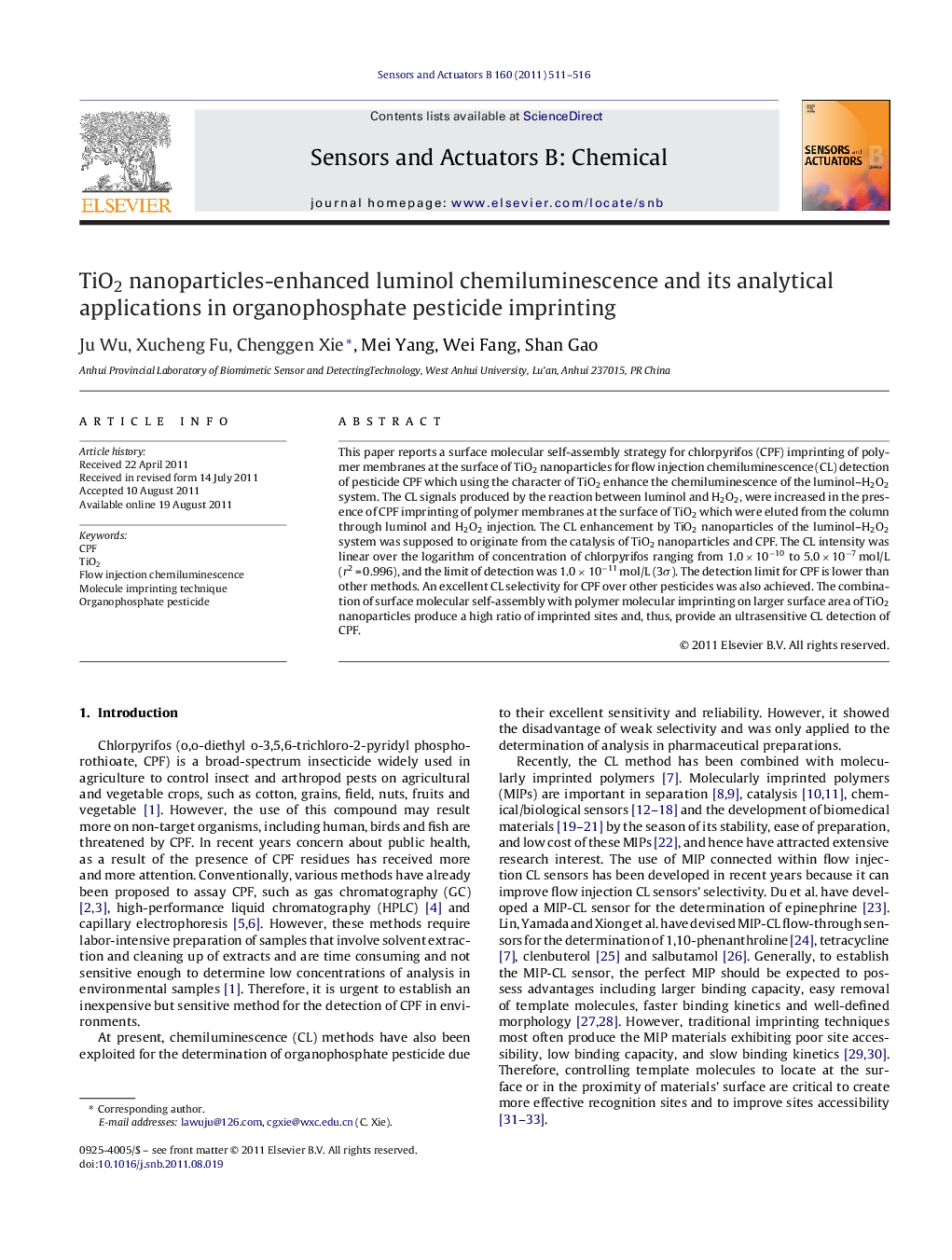| Article ID | Journal | Published Year | Pages | File Type |
|---|---|---|---|---|
| 744001 | Sensors and Actuators B: Chemical | 2011 | 6 Pages |
This paper reports a surface molecular self-assembly strategy for chlorpyrifos (CPF) imprinting of polymer membranes at the surface of TiO2 nanoparticles for flow injection chemiluminescence (CL) detection of pesticide CPF which using the character of TiO2 enhance the chemiluminescence of the luminol–H2O2 system. The CL signals produced by the reaction between luminol and H2O2, were increased in the presence of CPF imprinting of polymer membranes at the surface of TiO2 which were eluted from the column through luminol and H2O2 injection. The CL enhancement by TiO2 nanoparticles of the luminol–H2O2 system was supposed to originate from the catalysis of TiO2 nanoparticles and CPF. The CL intensity was linear over the logarithm of concentration of chlorpyrifos ranging from 1.0 × 10−10 to 5.0 × 10−7 mol/L (r2 = 0.996), and the limit of detection was 1.0 × 10−11 mol/L (3σ). The detection limit for CPF is lower than other methods. An excellent CL selectivity for CPF over other pesticides was also achieved. The combination of surface molecular self-assembly with polymer molecular imprinting on larger surface area of TiO2 nanoparticles produce a high ratio of imprinted sites and, thus, provide an ultrasensitive CL detection of CPF.
